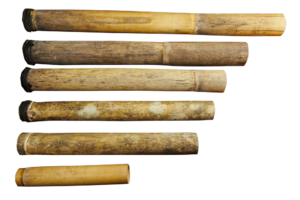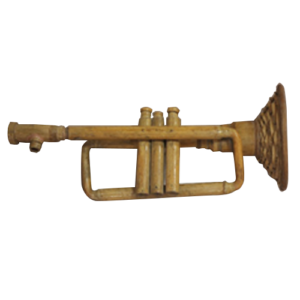| This is a six-piece percussion instrument made of bamboo poles of various lengths. The top of the pole is open while the bottom is closed with a node. It is played by stomping the bottom of the pole against the ground or on a piece of flatwood on the floor. These are played using the Sillongwat (play after the other) pattern. A variation in sound results when the instrument’s top end is covered as it hits the ground. This instrument is used during traditional baptisms, house blessings, and festivals. |
Menu
Tungatong
Science in a creative industry.
The DOST-FPRDI has a Bamboo Musical Instruments Innovation R&D program aimed at improving the quality of locally-made bamboo musical instruments (BMIs) through science and innovative technologies. The program seeks to standardize the production of selected BMIs, develop prototype designs, analyze raw material sources and existing markets, and build a BMI processing facility. In addition, the program aims to document the ethnocultural story behind several BMIs and identify the bamboo species used in BMI production to promote public awareness and appreciation of the cultural importance of these musical instruments. The program is a collaboration with the University of the Philippines and Philippine Normal University for teaching modules and analyzing sound quality and standardization of BMI design. The DOST Grants-in-Aid program provides funding.
PhBMI


